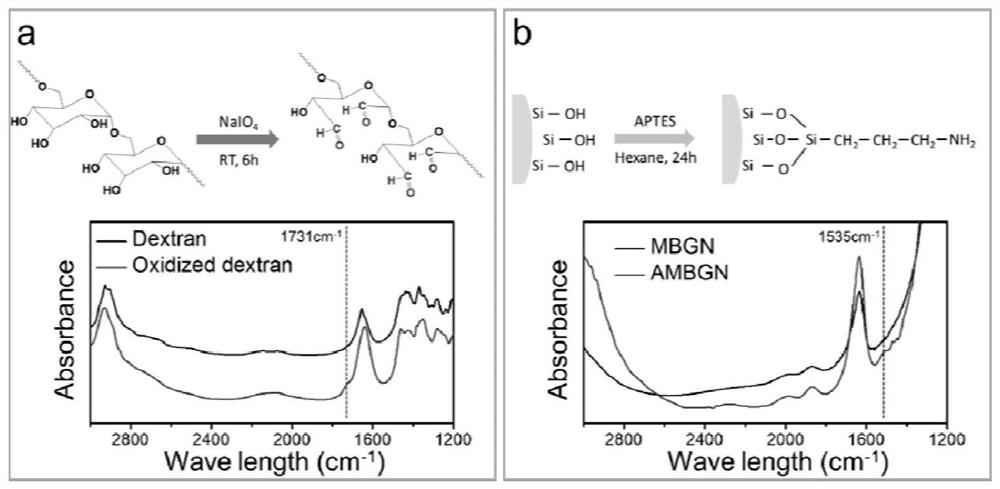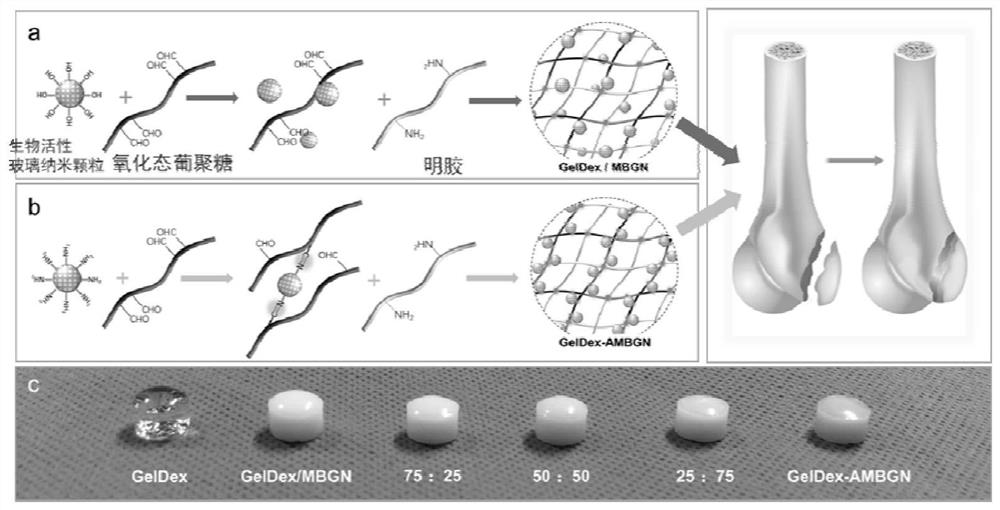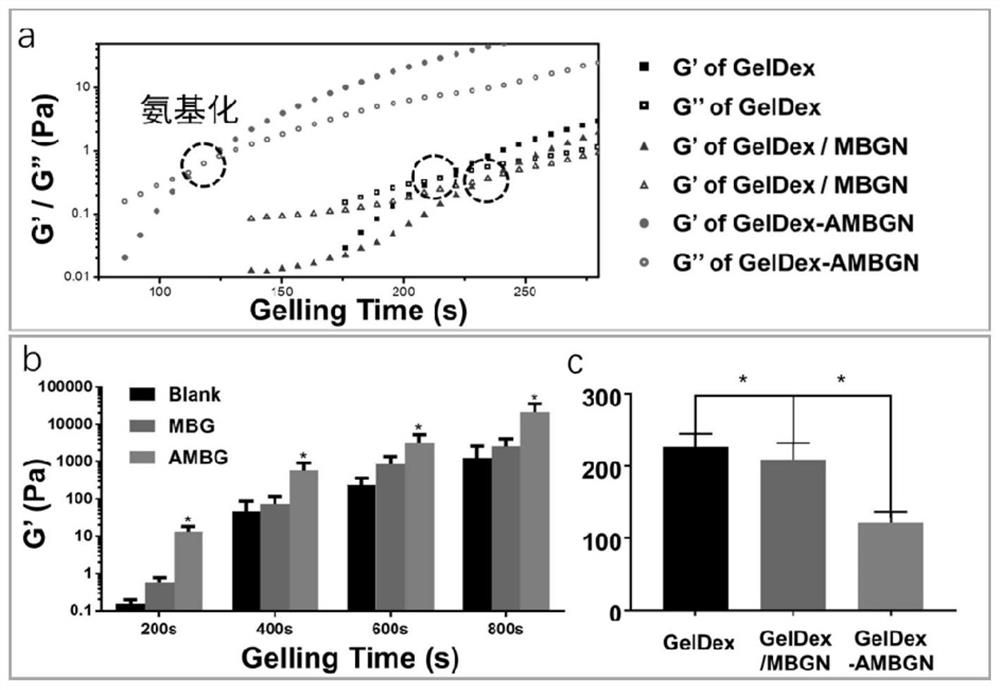A gelatin-based bone tissue adhesive, its preparation method and application
A tissue adhesive and adhesive technology, applied in the field of materials, can solve the problems of poor mechanical properties, degradability and poor biocompatibility
- Summary
- Abstract
- Description
- Claims
- Application Information
AI Technical Summary
Problems solved by technology
Method used
Image
Examples
preparation example Construction
[0037] The present invention does not limit to the preparation method of described aldoglucose, those skilled in the art can be well known, preferably can be prepared as follows:
[0038] Dextran and sodium periodate are mixed and stirred for reaction, dialyzed, filtered and freeze-dried to obtain aldoglucose.
[0039] Firstly, dextran was dissolved in deionized water, sodium periodate was dissolved in deionized water, and sodium periodate solution was added dropwise to the dextran solution at room temperature, under the conditions of avoiding light and stirring, and then The reaction is carried out under magnetic stirring at room temperature and protected from light, and the reaction time is 4-6 hours.
[0040] After the reaction, add ethylene glycol to terminate the oxidation reaction, then transfer the reaction system to a dialysis bag with a molecular weight of 3500, place it in deionized water for dialysis for 36-48 hours, and replace the deionized water for dialysis ever...
Embodiment 1
[0067] Synthesis of Gelatin-Based Bone Tissue Adhesives Reinforced with Modified Bioactive Glass Nanoparticles:
[0068] 1. Preparation of Aldehyddextran
[0069] Dissolve 5g of dextran in 100ml of deionized water, 5g of sodium periodate in 60ml of deionized water, and add the sodium periodate solution dropwise into the dextran solution at room temperature, under the condition of avoiding light and stirring, Then magnetically stirred at room temperature and protected from light, and reacted for 6 h. After the reaction, 1ml of ethylene glycol was added to the reaction system to stop the oxidation reaction. Then transfer the reaction system to a dialysis bag with a molecular weight of 3500, and place it in deionized water for dialysis for 48 hours. The deionized water used for dialysis is replaced every 12 hours. After the dialysis is completed, the product obtained is filtered with filter paper. It was pre-frozen in the refrigerator, and then freeze-dried in a freeze dryer fo...
Embodiment 2
[0075] Embodiment 2 Characterization of physical and chemical properties of gelatin-based bone adhesive
[0076] 1. Fourier Transform Infrared Spectroscopy (FTIR)
[0077] Mix each group of gelatin-based bone adhesives after cooling and drying with potassium bromide at a mass ratio of 1 / 50 and grind them uniformly, and put them into a tablet machine to prepare corresponding sheet-like samples, using ATR- Scan the sample in FTIR mode, set the resolution to 4cm-1, and scan the wavelength to 400-4000cm-1, and analyze the similarities and differences of the chemical structure of the material before and after modification through different curves obtained.
[0078] The result is as figure 1 as shown, figure 1 .(a). Chemical schematic diagram and FTIR characterization of aldehyde dextran synthesis; (b). Chemical schematic diagram and FTIR characterization of bioactive glass amination modification. The present invention proves the successful synthesis of aldehydglucan and the amin...
PUM
| Property | Measurement | Unit |
|---|---|---|
| Particle size | aaaaa | aaaaa |
Abstract
Description
Claims
Application Information
 Login to View More
Login to View More - R&D
- Intellectual Property
- Life Sciences
- Materials
- Tech Scout
- Unparalleled Data Quality
- Higher Quality Content
- 60% Fewer Hallucinations
Browse by: Latest US Patents, China's latest patents, Technical Efficacy Thesaurus, Application Domain, Technology Topic, Popular Technical Reports.
© 2025 PatSnap. All rights reserved.Legal|Privacy policy|Modern Slavery Act Transparency Statement|Sitemap|About US| Contact US: help@patsnap.com



